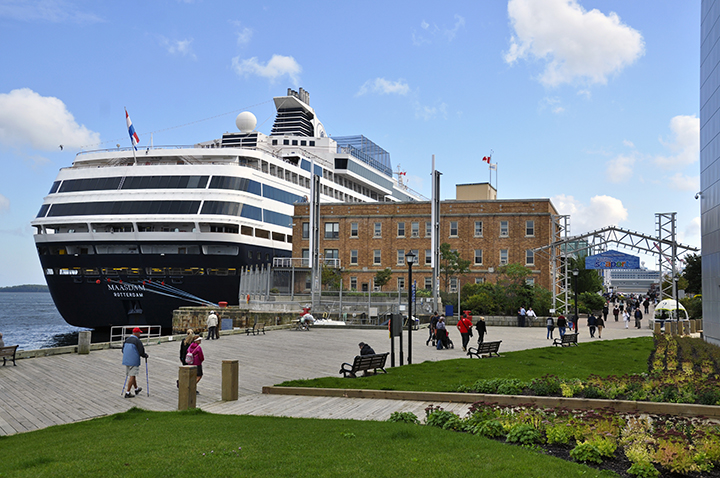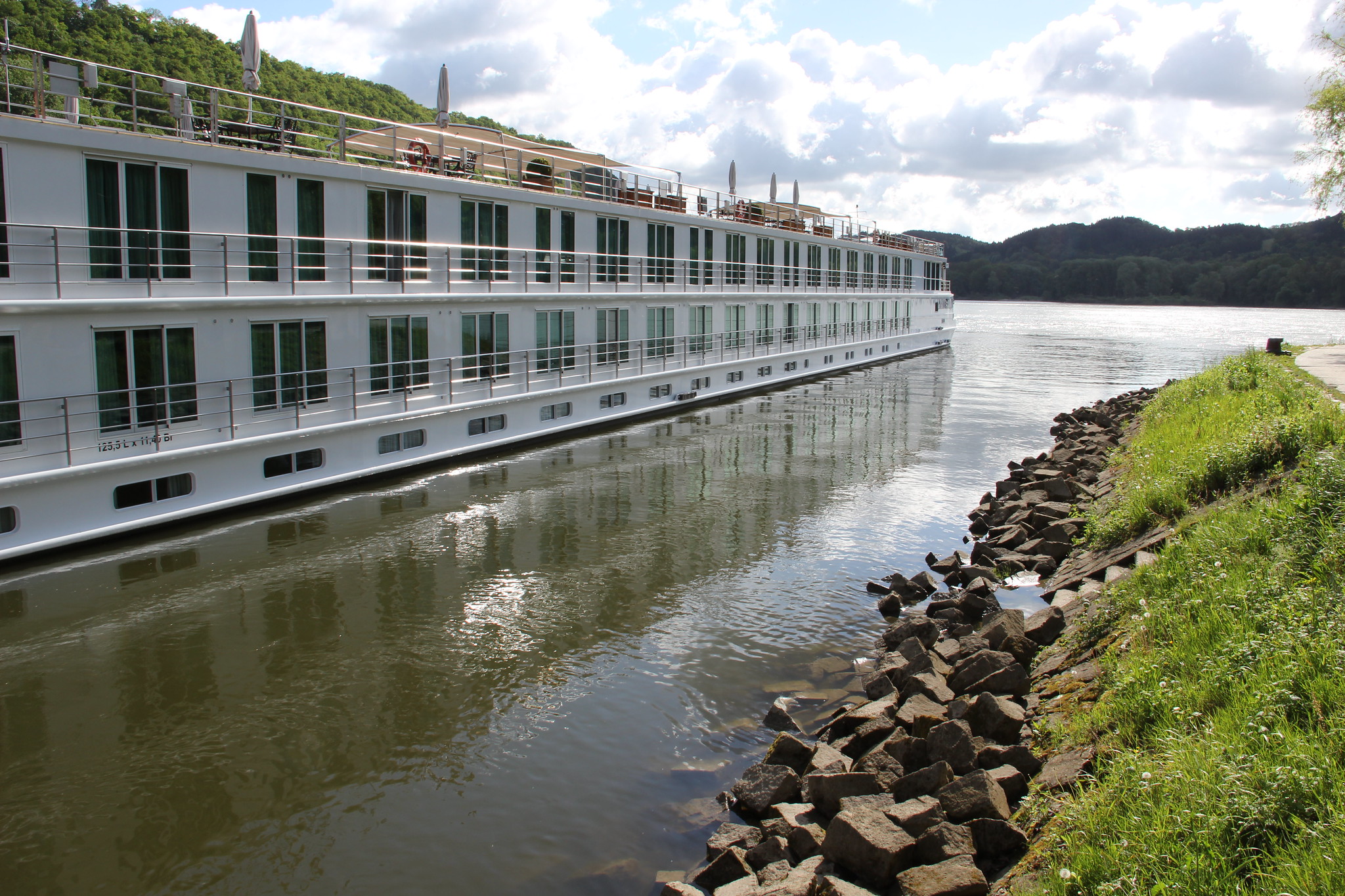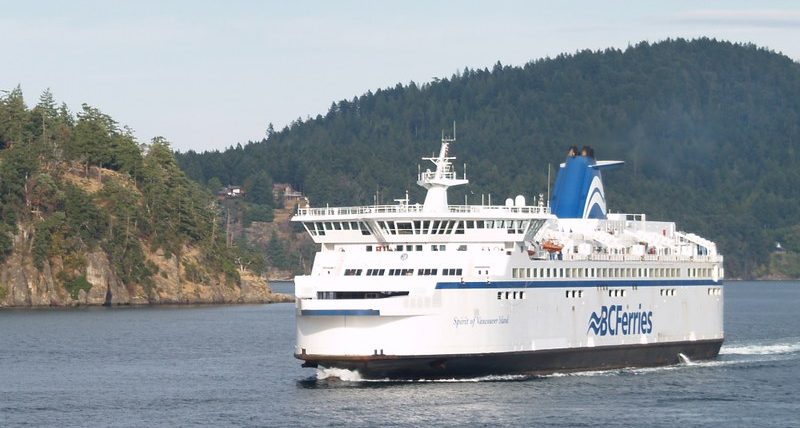Chapter 7. Transportation
7.3 Water

Travel by water is as old as civilization itself. However, the industry as we know it began when Thomas Newcomen invented the steam engine in 1712. The first crossing of the Atlantic by steam engine took place in 1819 aboard the SS Savannah, landing in Liverpool, England, after 29 days at sea. Forty years later, White Star Lines began building ocean liners including the Olympic-class ships (the Olympic, Britannic, and Titanic), expanding on previously utilitarian models by adding luxurious amenities (Briggs, 2008).
A boom in passenger ship travel toward the end of the 1800s was aided by a growing influx of immigrants from Europe to America, while more affluent passengers travelled by steamship for pleasure or business. The industry grew over time but, like rail travel, began to decline after the arrival of airlines. Shipping companies were forced to change their business model from pure transportation to “an experience,” and the modern cruise industry was born.
The Cruise Sector
We’ve come a long way since the Olympic class of steamship. Today, the world’s largest cruise ship, MS Oasis of the Seas, has an outdoor park with 12,000 plants, an 82-foot zip wire, and a high-diving performance venue. It’s 20 storeys tall and can hold 5,606 passengers and a crew of up to 2,394 (Magrath, 2014). A crew on a cruise ship will include the captain, the chief officer (in charge of training and maintenance), staff captain, chief engineer, chief medical officer, and chief radio officer (communication, radar, and weather monitoring).
Spotlight On: Cruise Lines International Association
Cruise Lines International Association (CLIA) is the world’s largest cruise industry trade association with representation in North and South America, Europe, Asia, and Australasia. CLIA represents the interests of cruise lines and travel agents in the development of policy. CLIA is also engaged in travel agent training, research, and marketing communications (CLIA, 2014). For more information on CLIA, the cruise industry, and member cruise lines and travel agencies, visit the Cruise Lines International Association website.
Cruising the World
According to CLIA, 30 million passengers were expected to travel worldwide on 63 member lines in 2019. Projections for 2020 were 32 million passengers expected to cruise (CLIA, 2020). Given increased demand, 24 new ships were expected in 2014–15, adding a total capacity of over 37,000 passengers.
Over 55% of the world’s cruise passengers are from North America, and the leading destinations (based on ship deployments), according to CLIA, are:
- The Caribbean (37%)
- The Mediterranean (19%)
- Northern Europe (11%)
- Australia/New Zealand (6%)
- Alaska (5%)
- Asia (4%)
- South America (3%)
River Cruising
While mass cruises to destinations like the Caribbean remain incredibly popular, river cruises are emerging as another strong segment of the industry. The key differences between river cruises and ocean cruises are (Hill, 2013):
- River cruise ships are smaller (400 feet long by 40 feet wide on average) and can navigate narrow passages.
- River cruises carry fewer passengers (about 10% of the average cruise, or 200 passengers total).
- Beer, wine, and high-end cuisine are generally offered in the standard package.
The price point for river cruises is around the same as ocean trips, with the typical cost ranging from $2,000 to $4,000, depending on the itinerary, accommodations, and other amenities.
From 2008 to 2013, river cruises saw a 10% annual passenger increase. Europe leads the subcategory, while emerging destinations include a cruise route along China’s Yangtze River. As the on-board experience differs greatly from a larger cruise (no play areas, water parks, or on-board stage productions), the target demographic for river cruises is 50- to 70-year-olds. According to Torstein Hagen, founder and chairman of Viking, an international river cruising company, “with river cruises, a destination is the destination,” although many river cruises are themed around cultural or historical events (Hill, 2013).

Cruising in Canada
According to a study completed for the North West & Canada Cruise Association (NWCCA) and its partners, in 2012, approximately 1,100 cruise ship calls were made at Canadian cruise ports generating slightly more than 2 million passenger arrivals throughout the six-month cruise season (BREA, 2013). The study found three key cruise itineraries in Canada:
- Canada/New England
- Quebec (between Montreal and Quebec City and US ports)
- Alaska (either departing from, or using, Vancouver or another BC city as a port of call)
These generated $1.16 billion in direct spending. Cruising also generated almost 10,000 full- and part-time jobs paying $397 million in wages and salaries. The international cruise industry also generated an estimated $269 million in indirect business and income taxes in Canada, and the majority of this spending was in British Columbia (BREA, 2013).
Cruising isn’t the only way for visitors to experience the waters of Canada. In fact, the vast majority of our water travel is done by ferry. Let’s take a closer look at this vital component of transportation infrastructure.
Ferries
Canada is home to over 180 different ferry routes with a route presently operating in each province and the majority of the territories. These ferries represent a mix of private and publicly operated routes and well as a mix of passenger, freight, and mixed-use ferries.
Transportation through waterways has always been a crucial part of Canada’s history. From the First Nations traveling by canoes through rivers, lakes and parts of the oceans to the early explorers, there has always been an emphasis on the transportation of people by boats.
The British and French colonies saw the development of more modern types of transportation on waterways including ferries that functioned to transport the public (usually private ferries) and troops (public ferries).(Canadian Ferry Association, 2021)

In 2011, Travel + Leisure Magazine profiled several notable ferry journeys in the article “World’s Most Beautiful Ferry Rides,” including:
- An 800-mile ferry voyage through Chile’s Patagonian fjords
- A three-mile trip from the Egyptian Spice Market to Istanbul, Turkey
- Urban ferry rides including Hong Kong’s Victoria Harbour, Australia’s Sydney Harbour, and New York City’s Staten Island Ferry
The article also featured the 15-hour trip from Port Hardy to Prince Rupert on British Columbia’s coast (Orcutt, 2011).
While cruising is often a pleasant and relaxing experience, there are a number of safety concerns for vessels of all types.
Cruise and Ferry Safety
One of the major concerns on cruise lines is disease outbreak, specifically the norovirus (a stomach flu), which can spread quickly on cruise ships as passengers are so close together. The US Centers for Disease Control’s (CDC) vessel sanitation program is designed to help the industry prevent and control the outset, and spreading, of these types of illnesses (Briggs, 2008).
Accidents are also a concern. In 2006, the BC Ferries vessel MV Queen of the North crashed and sank in the Inside Passage, leaving two passengers missing and presumed dead. The ship’s navigating officer was charged with criminal negligence causing their deaths (Keller, 2013). More recently, a “hard landing” at Duke Point terminal on Vancouver Island caused over $4 million in damage. BC Ferries launched a suit against a German engineering firm in late 2013, alleging a piece of equipment failed, making a smooth docking impossible. The Transportation Safety Board found that staff aboard the ship didn’t follow proper docking procedures, however, which contributed to the crash (Canadian Press, 2013).
Spotlight On: The Transportation Safety Board
The Transportation Safety Board (TSB) investigates marine, pipeline, rail, and air incidents. It is an independent agency that reviews an average of 3,200 events every year. It does not determine liability; however, coroners and medical examiners may use TSB findings in their investigations. The head office in Quebec manages 220 staff across the country. For more information, visit the Transportation Safety Board website.
We’ve covered the skies, the rails, and the seas. Now let’s round out our investigation of transportation in tourism by delving into travel on land.
Image Credits
Cruise ship at Pier 20 by Halifax Regional Municipality Public Affairs office on Wikimedia Commons is licensed under a CC BY-SA 4.0 licence.
Uniworld River Cruises River Beatrice in Passau Germany by Gary Bembridge on Flickr is licensed under a CC BY 2.0 licence.
BC Ferries Spirit of Vancouver Island by Craig Bennett on Flickr is licensed under a CC BY 2.0 licence.

